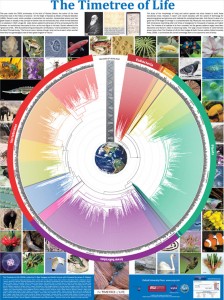A few days ago I posted a link to an article on miniature cows on the DAD-Net mailing list of the livestock genetic resources conservation community. Here’s the gist of that piece, which appeared in the LA Times:
…miniature Herefords consume about half that of a full-sized cow yet produce 50% to 75% of the rib-eyes and fillets, according to researchers and budget-conscious farmers.
…
In the last few years, ranchers across the country have been snapping up mini Hereford and Angus calves that fit in a person’s lap. Farmers who raise mini Jerseys brag how each animal provides 2 to 3 gallons of milk a day, though they complain about having to crouch down on their knees to reach the udders.
…
Minicows are not genetically engineered to be tiny, and they’re not dwarfs. They are drawn from original breeds brought to the U.S. from Europe in the 1800s that were smaller than today’s bovine giants, said Ron Lemenager, professor of animal science at Purdue University in West Lafayette, Ind.
This elicited quite a discussion on DAD-Net, set off by a suggestion that such smaller breeds of livestock might be useful in the Pacific Island Islands and Territories (PICTs), which have very limited resources for livestock production.
One contributor pointed out that the amount of feed consumed is not the only consideration:
Minature breeds are possibly fine for subsistence or local supply oriented production systems (which some PICT systems are, but possibly also important to consider how good such systems are at satisfying local or subsistence demands as well)…
They are, however, less efficient to process for commercialized production systems because it costs almost the same to slaughter and process a miniature as it does to slaughter and process a larger animal of the same species.
Once again, for me it is really an issue of fitness for purpose and I, therefore, believe diversification is the real answer.
Another pointed out that just because an animal consumes less doesn’t mean it consumes more efficiently:
The idea of considering miniature breeds of livestock for PICTs is a bit tricky. Animal size is naturally related to structure and function of the body, so the issue is about scaling… In short, smaller body size may require less volume of inputs but it is not necessarily more efficient in using these inputs in comparison with larger sizes of the same type.
…
The miniature breed of cattle referred to in the article (Hereford) is neither dwarf nor genetically engineered. They are a genetically improved beef animal also selected for their miniature body size apart from their desirable beef characteristics. They belong to an established commercial beef breed, and as such they are as demanding in terms of their input requirements to attain their top performance as are their bigger competitors, although in smaller amounts.
Another participant thought PICTs should make the most of what they already have:
I am simply of the opinion that PI countries stay with what breeds (appropriate exotic, exotic-cross locals), but make the necessary improvements where currently needed i.e. management, feed, breeding, animal health as well as the needed slaughter and meat inspection requirements.
But one did think there was a place for miniature livestock:
Miniature breeds for livestock production would be ideal to other PICTs while others may at this time not yet ready for such undertakings, since adaptability, management, husbandry and acceptance of the particular species or breeds to the local communities are yet to be researched into.
Finally, a couple of people objected to the word “miniature” itself:
I suggest that we avoid using the term “miniature” cows because this can be misleading. It is the terminology and what it is associated with that stands out more than the fundamental issues being raised in this debate. We have stigmatized a number of breeds because of issues of size, production and markets without consideration of the context. It is always important to put things in the right context.
Which is a pretty good note to end this summary on. The importance of context and of a diversity of options are things we like to talk about here. I just wish there was a place for similar discussion of plant genetic resources conservation issues…
